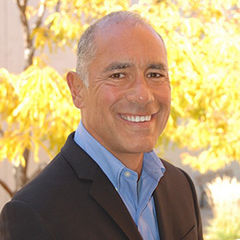This is Part 3 of a 6-part series titled "Successful Coaching During COVID-19". Read Part 4 here.
The transition from in-person to virtual exercise leadership has presented challenges for the majority of exercise pros. With the onset of the COVID-19 pandemic, many of us have had to become adept with virtual exercise leadership for the very first time. In a past blog, I presented the basics of moving from no previous virtual exercise leadership to making a smooth and effective transition to this new medium. This blog provides more support and resources to take your training and exercise leadership to the next level. It is divided into the personal and technical aspects of leading online exercise and includes several ACE links to give you specific guidance.
Personal
The challenge of not having personal contact with your clients is very real. Most of us are naturally attracted to the human contact that a person-to-person session provides. Although your potential engagement in a virtual environment is reduced, it doesn’t need to be completely lost.
As much as possible, do your best to create an environment that mimics the in-person training experience. This could be as simple as beginning or ending each online session with a few minutes of less formal interaction with your clients. Take that time to really talk to your clients on a personal level and obtain valuable feedback on your new virtual setup. In group settings, this approach can also help clients create valuable connections with each other.
Although direct hands-on spotting is unavailable, optimize safety by keeping the client’s weights manageable. Try lowering the weights and increasing the reps. If the client experiences sudden fatigue, for example, it will pose less risk if your client is unable to complete a set of exercises while holding light rather than heavier weights.
Finally, keep the session as personal as possible, whether you are teaching a group or training a client one on one. Some examples include celebrating birthdays, anniversaries and any other achievements and scheduling virtual events such as Zoom happy hours, “mixers” and other occasions that help maintain your connection with your clients. In addition, sending a client a motivational note by mail is much more personal than doing so via email or text. Be sure to ask your clients for ideas on events. You’ll be surprised by how creative they are!
Technology
An important upgrade for exercise pros who teach small- and large-group sessions is a larger computer screen. Even a 22-inch screen is barely enough for an instructor or trainer leading a group of as few as four participants. Larger groups require even larger screens and/or a partner instructor who is also wearing a microphone. The partner can be the screen supervisor, focusing on the participants’ technique while also providing feedback and encouragement. Rather than a computer screen, use a large, high-definition television screen to optimize the experience.
Make sure you place your camera at eye level to avoid looking down or up at your audience. If you are using your smartphone as a camera, shoot horizontally, not vertically, as the more screen you have available, the better.
When it comes to audio, you will also quickly discover that you cannot use the television speakers as your sound source. Your instruction will end up feeding back from the television into your microphone, making the audio difficult to understand.
It is best to have your microphone plugged directly into the computer when instructing a session. Also, any music you are including should be played from a file or disc on your computer. Music picked up from another source in the room will not project well.
In a group session, you may find that it is better to talk a bit slower than you would during an in-person class, while ramping up your personal presence. Using a high-quality, wireless microphone can make a significant impact on your ability to effectively communicate.
It is a good idea to tape a practice session so that you can review not only your performance but also the performance of your technology, and then adjust accordingly. For those who are uncomfortable seeing themselves on camera, this is a viable way to watch yourself improve. Over time, you will become more confident with reviewing your practice and assessing camera positions and sound quality (including your own voice). With practice, you will be able to reproduce quality exercise sessions and classes.
Training, coaching and delivering exercise sessions are becoming more technical and virtual. Experimenting with virtual classes will make you more knowledgeable and flexible in this rapidly changing landscape.
Below are some valuable resources from ACE to help you become a truly effective leader. Try to commit to adopting one or two simple changes at a time, as this will help you avoid becoming overwhelmed while using virtual tools.
Lastly, embrace this new reality with confidence. It can make your business more viable now and in the future.
ACE Resources
ACE webinars on coping with the COVID-19 pandemic:
- Live Panel: How 3 Fitness Studios Shifted Strategies During COVID-19
- Music Licensing and Virtual Classes: Understanding the Law
- Connecting with Clients During COVID-19
- Expert Insights on How to Deliver an Online Exercise Session: One-to-one and Group
- Take Your Coaching and Training Business Online
Blog posts on exercise leadership in COVID-19:
- Technical Considerations for Virtual Coaching
- Cueing in a Virtual Setting
- Programming Considerations to Deliver a Great Virtual Experience
- The Three Cs of Virtual Coaching
- Motivating Clients during Virtual Coaching Sessions
- Tips for In-home Training
- How to Set Pricing for Virtual Coaching
- How to Set Up Virtual Coaching
Read Part 4: Stress Management for Health and Exercise Professionals During Difficult Times




 by
by 





